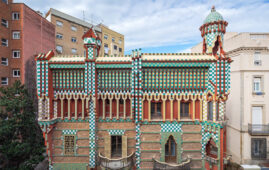

This is a historic and long overdue decision.


The American Wing of the storied Metropolitan Museum of Art has long held a collection of typically “American” artifacts: portraits of wigged colonial leaders, Tiffany chandeliers, Frank Lloyd Wright chairs, silver owned by Paul Revere Jr., quilts by unknown 19th-century makers.
Together they tell a specific, but noticeably incomplete, history of the United States.
Beginning in the fall of 2018, however, the American Wing will attempt to course correct by including a subgroup of art that has been regrettably missing from the section: Native American art. Thanks to a donation from collectors Charles and Valerie Diker, a batch of 91 works of Native American art will be headed for the American Wing, marking a historic change in the way art is curated at New York’s most famous museum.
In the past, Native American art has been housed in The Met’s Arts of Africa, Oceania and the Americas galleries, a section that spans 3,000 years, three continents and several islands. According to The New York Times, this was a bit confusing to international patrons who were accustomed to seeing indigenous art displayed as part of their own national narratives.
“They go through [the American Wing] and expect to see Native American work here,” Met curator Sylvia Yount explained. “Because often where they come from, indigenous art is part of the narrative of a nation’s art, in a way that it’s not in the United States. We’re really behind the curve.”
The Met characterizes its move to incorporate work from the Dikers ― including bowls, dresses, drawings and bags created by Washoe, Wasco, Arapaho and Anishinaabe artists ― into the American Wing as a “curatorial decision to display art from the first Americans within its appropriate geographic context.”
“This transformative gift marks a turning point in the narratives presented within the American Wing,” Rebora Barratt, deputy director for The Met’s collections and administration, wrote in a press release shared with The Huffington Post. “With the addition of these works, The Met will be able to offer a much richer history of the art of North America, one that will include critical perspectives on our past and represent diverse and enduring native artistic traditions.”


In light of the InfoWars host’s.


Caution: May induce a “transcendental experience.”


It’s no Sagrada Família, but it.


At 15 years old, S.E. Hinton.


If 2017 was a poem, what.
Leave a Comment